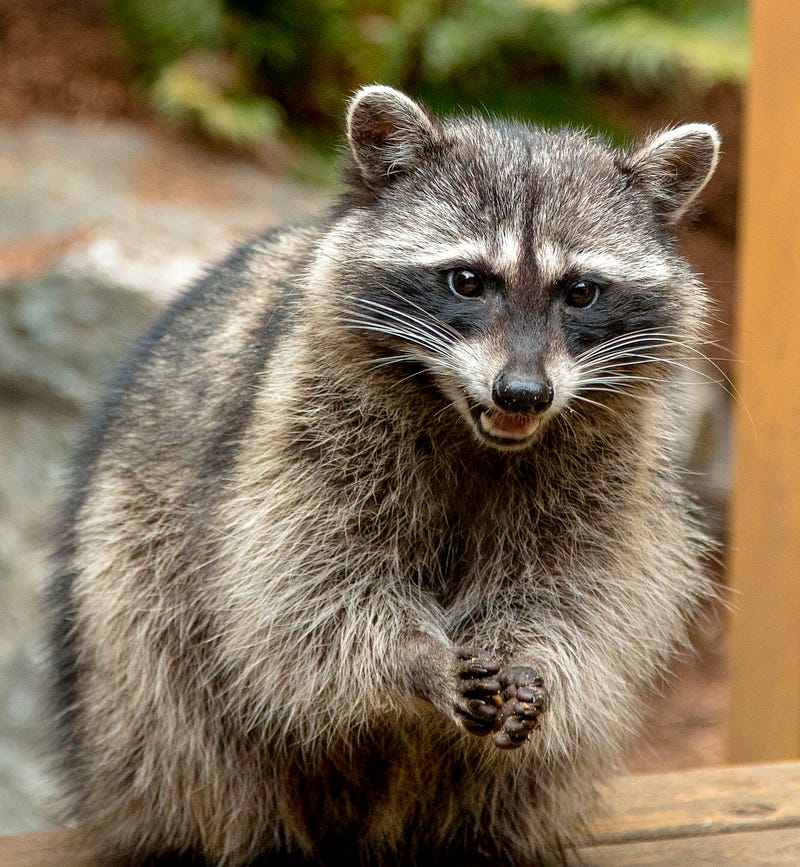The Raccoon Conundrum: How Clever Creatures Outsmarted Toronto
Written on
Chapter 1: The Raccoon Crisis
In 2010, the residents of Toronto encountered an unexpected threat that emerged under the cover of darkness. Garbage bins were being raided, leaving a chaotic mess reminiscent of a Jackson Pollock artwork. The instigator? The notorious urban raccoon.
During a 2015 press conference, Mayor John Tory addressed a city beleaguered by these nocturnal intruders. "We've discovered that Raccoon Nation is clever, hungry, and relentless. Our mission, alongside our private-sector allies, is to prove that we can outsmart them," he stated.
A dedicated team of top scientists, engineers, and designers set out to create raccoon-proof trash bins. By 2016, they introduced a redesigned green bin featuring a handle on the lid, specifically engineered to thwart raccoon access. This innovation came with a hefty price tag of $31 million CAD. However, Toronto underestimated the raccoon’s adaptability and ultimately lost this so-called battle. Raccoons quickly learned to tip the bins over, allowing them to easily access the treasures within. Surprisingly, this wasn't the first instance of these charming troublemakers outsmarting human efforts.

Chapter 2: The Rise of Raccoons
Raccoons are native to North America, traditionally thriving in forested river environments. However, with the rise of industrialization in the early 1900s, humans encroached upon their habitats, leading to significant environmental changes due to climate change. Instead of retreating, raccoons adapted to urban life, flourishing in cities.
Initially hunted for their pelts, raccoons were even introduced to Germany in the 1930s for this purpose. Once they settled in German forests, they rapidly spread across Europe, reaching as far as Spain. Their introduction into various countries worldwide—from Azerbaijan to Japan—has disrupted local ecosystems, as they are not native to these regions.
In "How Toronto lost its war with raccoons. Badly," this video explores the humorous and serious implications of raccoon invasions in urban settings, highlighting their cleverness and adaptability.
Chapter 3: The Intelligence of Raccoons
Despite being viewed as pests by early settlers, some sought to domesticate raccoons as pets. This curiosity about their intelligence led scientists to test their cognitive abilities. In 1907, researchers conducted a puzzle box experiment to assess whether raccoons could learn to escape by manipulating various latches, similar to an animal escape room.
The results revealed that raccoons were adept learners, outperforming dogs and cats. These findings sparked intense debate about the intelligence of raccoons. In 1913, Walter S. Hunter conducted a study comparing various animals, including raccoons, rats, and dogs, on their ability to respond to light signals for rewards. While rats and dogs struggled, raccoons quickly adapted, demonstrating their cognitive prowess.
Nonetheless, raccoons proved challenging to study due to their escapism and unruly nature, leading scientists to shift focus away from their intelligence research.

Chapter 4: Raccoons and Climate Change
Raccoons exemplify the troubling aspects of climate change; as temperatures rise, they expand their territory into urban areas. The abundance of waste generated by humans attracts them to our trash. To mitigate raccoon access to garbage bins, a comprehensive wildlife management approach must be adopted, addressing the underlying climate issues.
While we admire the raccoon for its cleverness and adaptability, we should not hold it responsible for claiming our garbage. In fact, the raccoon has become an unofficial mascot for Toronto, embodying resilience and resourcefulness. This has led to a surge in raccoon-themed merchandise and heartfelt tributes to those unfortunate enough to be victims of traffic.
I, for one, celebrate the incredible raccoon.
The second video, "Vlog: War in Ukraine. Special edition: Raccoon Military Operation," humorously discusses the raccoon’s tenacity and its metaphorical role in the ongoing struggles faced by urban environments.
For those interested in exploring the connections between animal intelligence and neuroscience, check out my other articles:
- The Animal With Many Brains That Makes Us Rethink Intelligence
- You'll Catch More Zeroes with Bees Than Toddlers
- Problem-solving without a brain: just how smart is slime?